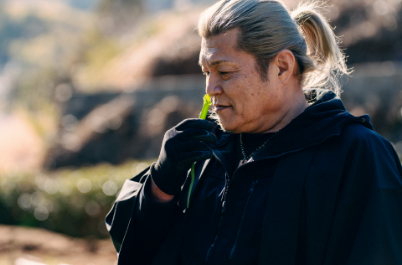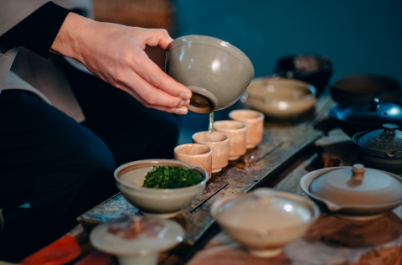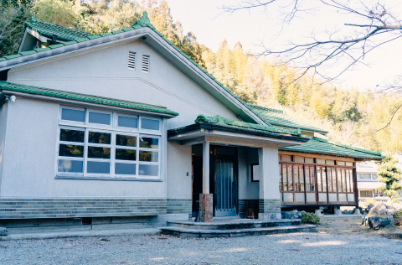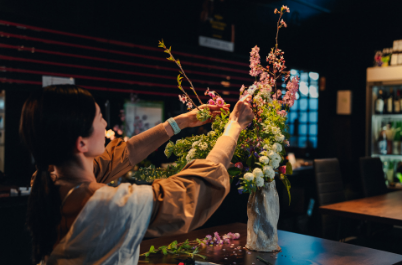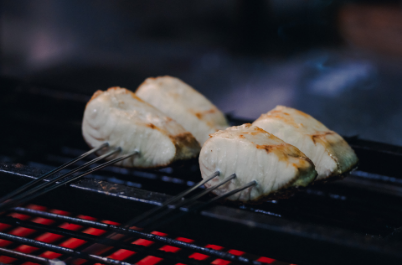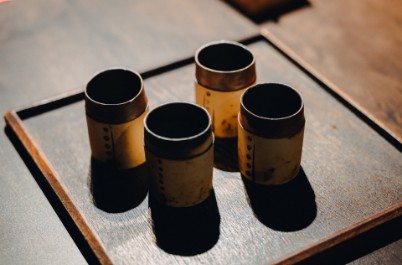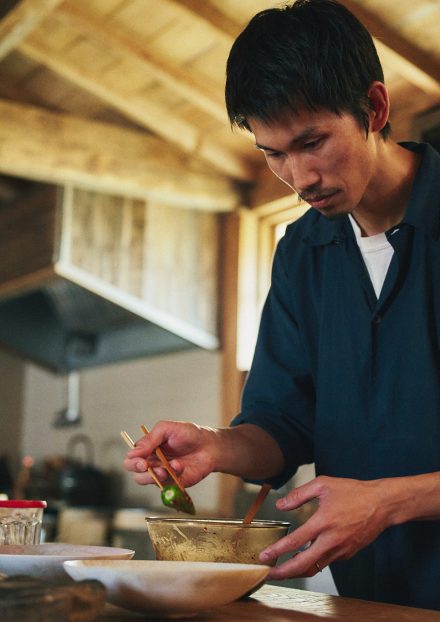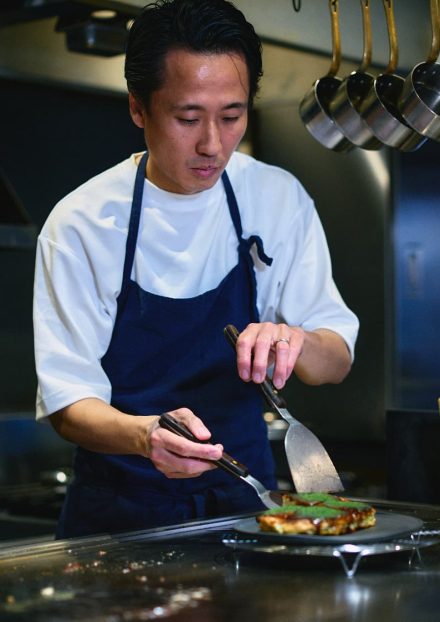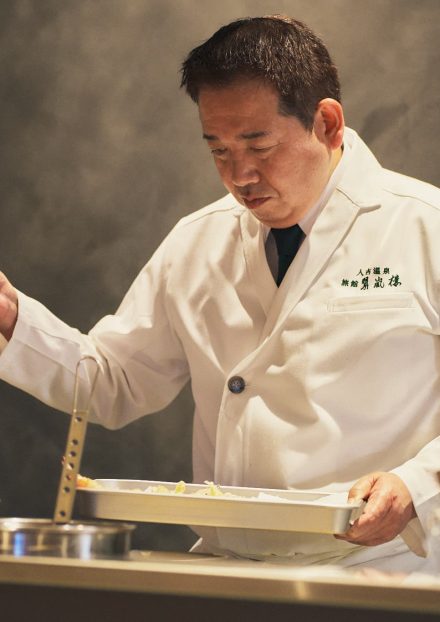Kumamoto’s abundant food is imbued with the wabi-sabi of Japanese culture, guided by
Makoto Morii of Creative Japanese Dining Zen
Prolougue
Story 1 An encounter is to be treasured—days of encountering food made with an awareness of who it is for
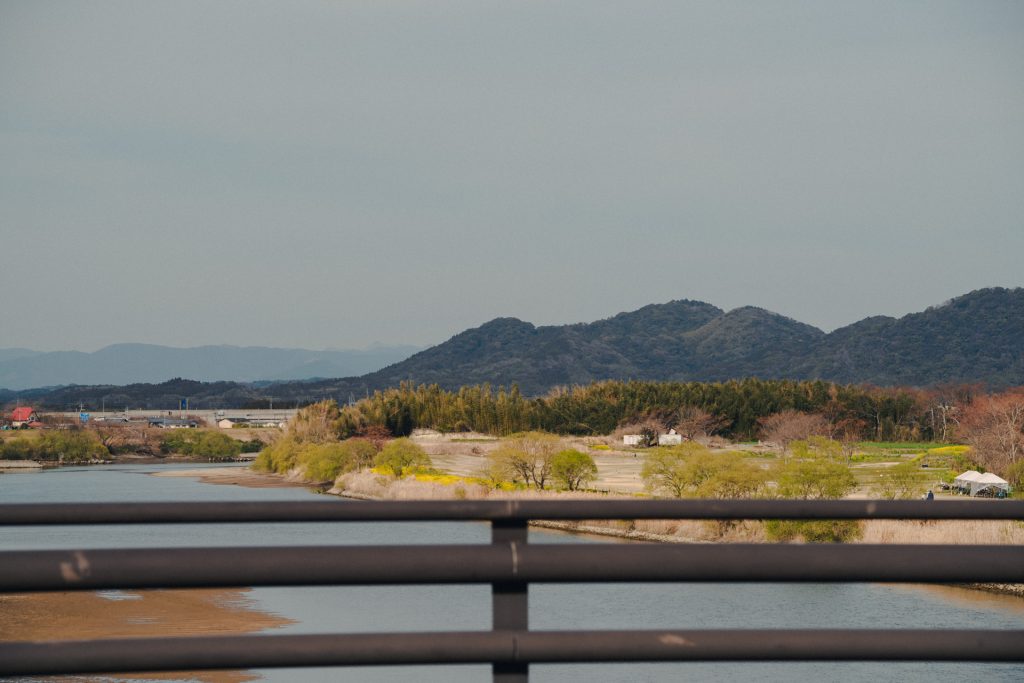
Tamana is a place of mountains, plains, and the sea, with Mount Shodaisan, the Tamana plain, and the Ariake Sea. Makoto Morii, who operates Creative Japanese Dining Zen, says, “Tamana is a microcosm of Kumamoto. We are proud of our abundant food.”
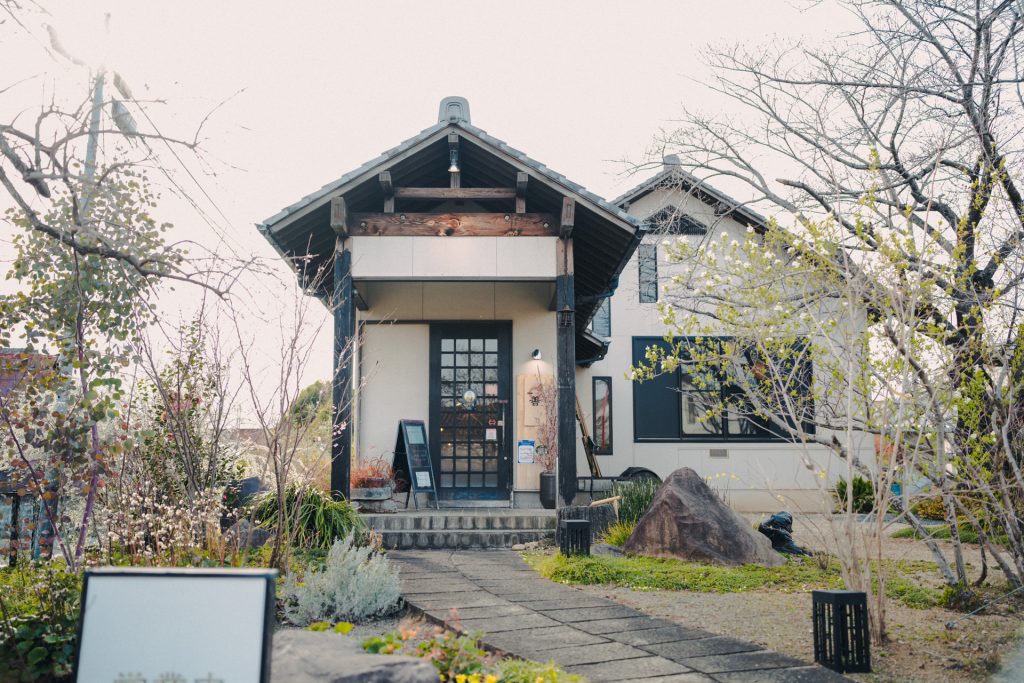
In every season, Zen is stocked with ingredients sourced from Tamana and throughout the prefecture, particularly natural ingredients and organic ingredients. All of these are procured from people known by Mr. Morii.
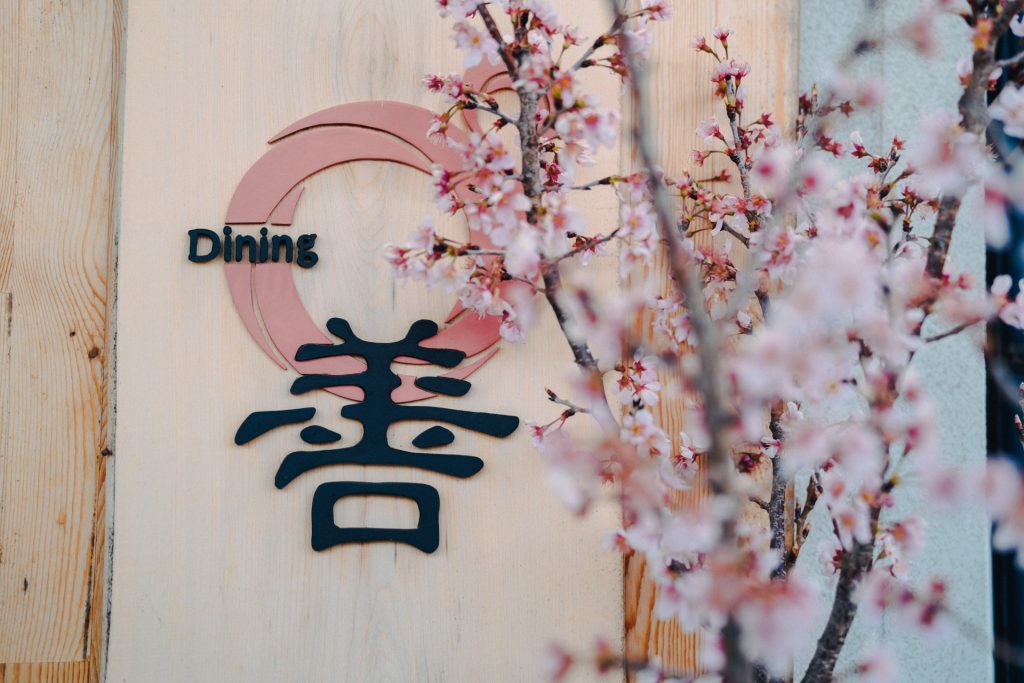
“I am aware of the efforts of the people who made them, and I am also responsible for taking care of these ingredients and serving them to diners.”
He has many friends who are chefs, and these chefs say that Mr. Morii is a “samurai chef.” This may be because he has a fierce samurai look about him, but it actually refers to his spirit.
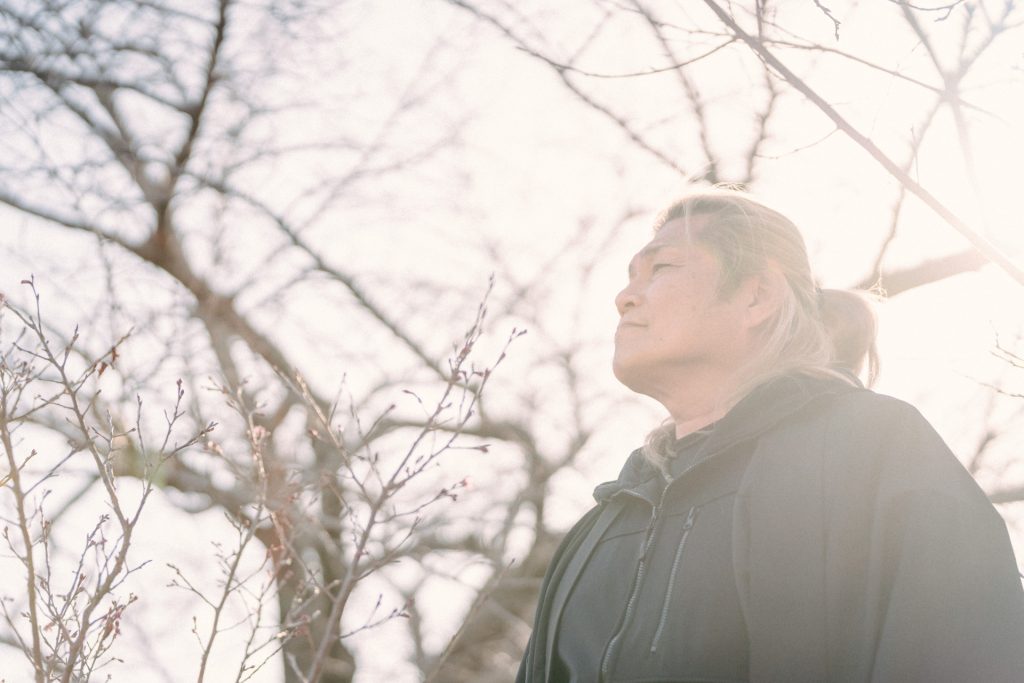
His seriousness about his ingredients and cuisine, his strong sense of responsibility, and his consideration for others—these qualities make him highly respected and adored by many, drawing people to gather around him.
This is because of his experience when he was young.
“My father was very serious and never praised me. Naturally, I began gauging his moods, and this has helped me become more aware and considerate,” he explains. He says that his father once complimented him on a fish dish that he had prepared. “I felt great. Now when I think of it, that may have been what made me want to become a chef.”
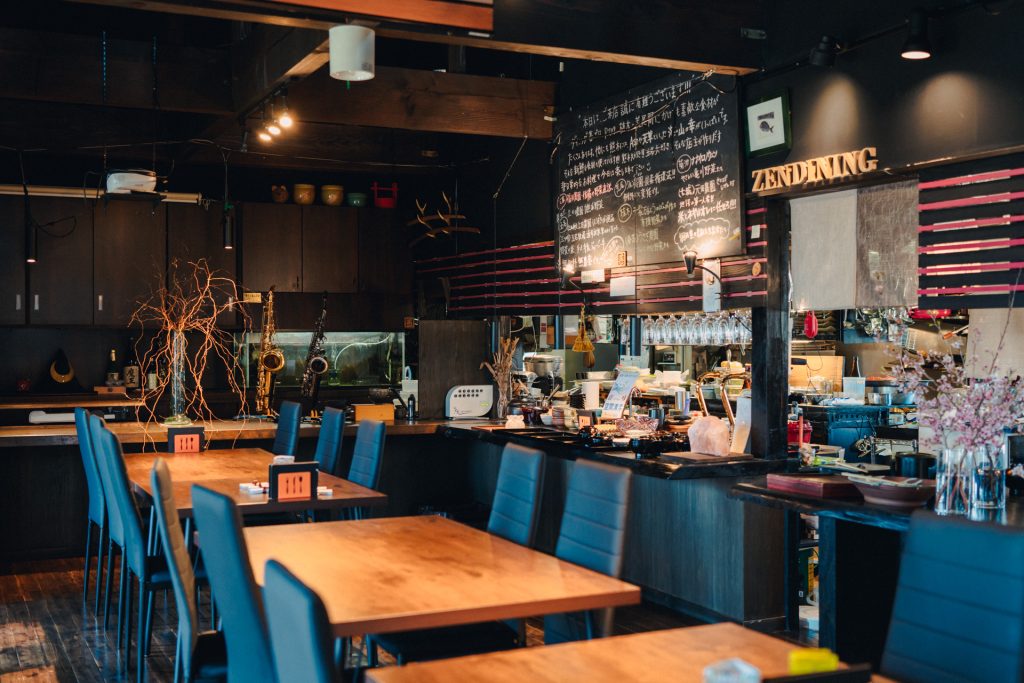
From his many experiences, he learned that hospitality is essential in the world of cuisine. You can’t check with the guests ahead of time, asking them what they want to eat, how they are feeling, or what they ate yesterday. It’s a one-shot performance without any prior discussions.
So then, what kind of consideration is shown in this one-shot performance? Offering hospitality through lavish ingredients? That’s not the stance that he takes. According to him, what is important is to make something as delicious as it can be.
He also considers who he wants to share this delicious food with or who the food is for, and then proceeds with his culinary creations.
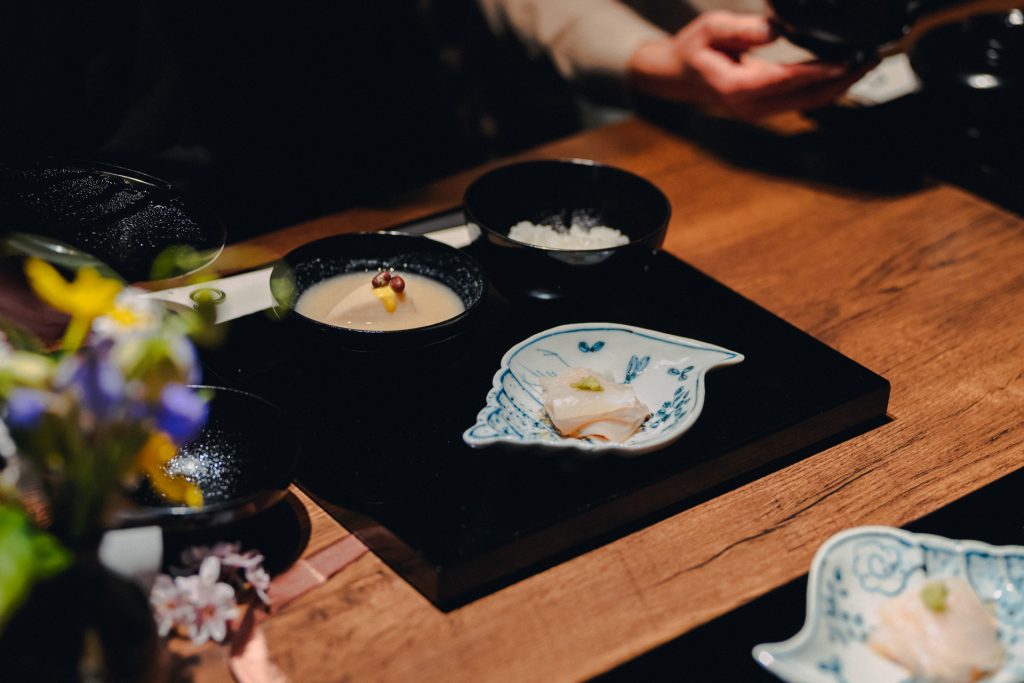
The theme of his Premium Menu is the Japanese traditional tea ceremony. Mr. Morii chose this theme because he has experience learning about the tea ceremony. Thus was born the Kumamoto Tea Kaiseki Plan, which blends the food culture of Kumamoto with heartfelt hospitality and the ultimate Japanese meal of the tea kaiseki.
Story 2 A tasting moment when the Japanese tea ceremony is turned into Kumamoto cuisine
Chef Morii decided to study tea kaiseki because he wanted to enhance his skills, even if only by a little bit. As he said, the restaurant world is a one-shot, win-or-lose proposition that does not involve any prior discussion. He studied a lot and expanded his skills so that he could give customers what they desired.
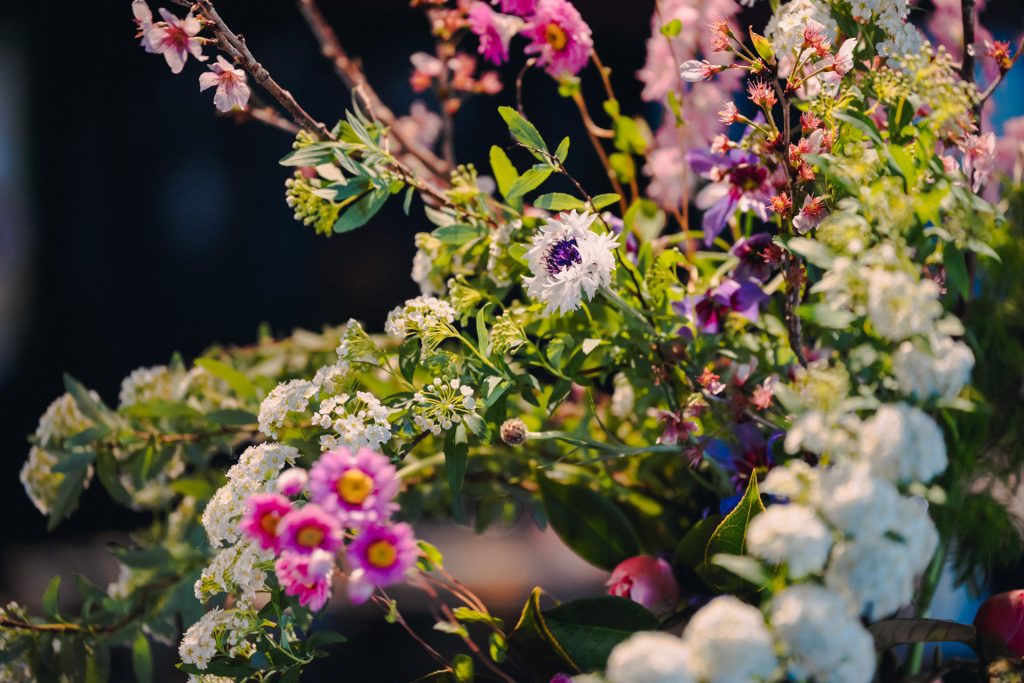
There are faces of producers, who said that they wanted to welcome guests. “I have people with these skills behind me, so I want to disseminate this concept through Zen.” With this in mind, Chef Morii decided to offer a “Kumamoto tea kaiseki” for his Premium Menu.
The first person he thought of was Mr. Hirotogawa of Takema Tea House Koshinraku.
Mr. Hirotogawa is a tea master who moved to Yamaga City in 2021.
Tea kaiseki is a meal for enjoying tea.
“Tea is essential to our existence, so I thought that it would be a waste if the barriers to accessibility were too high. Hiro-san and his colleagues think that it is better to have one more person enjoy tea at its purest than to insist on following the strict etiquette, and they convey the appeal of tea in a casual style.”
Chef Morii made a fervent request to someone he respects, and the Premium Menu came to fruition.
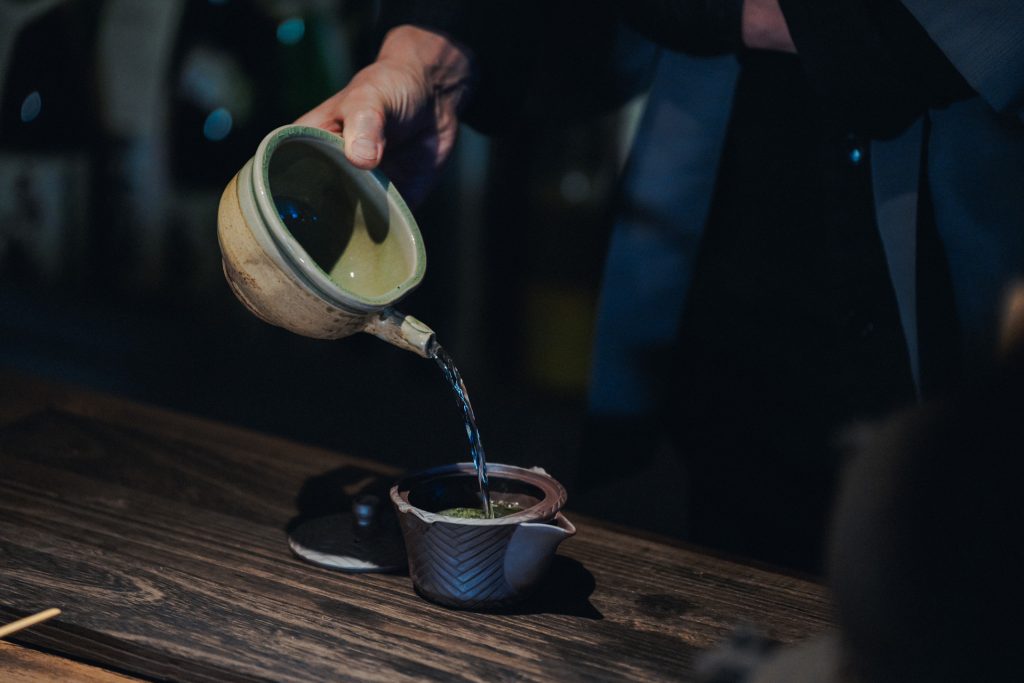
The tea kaiseki begins. Before one can relax, Hiro-san makes some tea.
The tea he uses is an original blend of green tea made from tea leaves grown in Kumamoto Prefecture.
As he serves it, he says, “You can feel a distinctive Japanese flavor in this tea.”
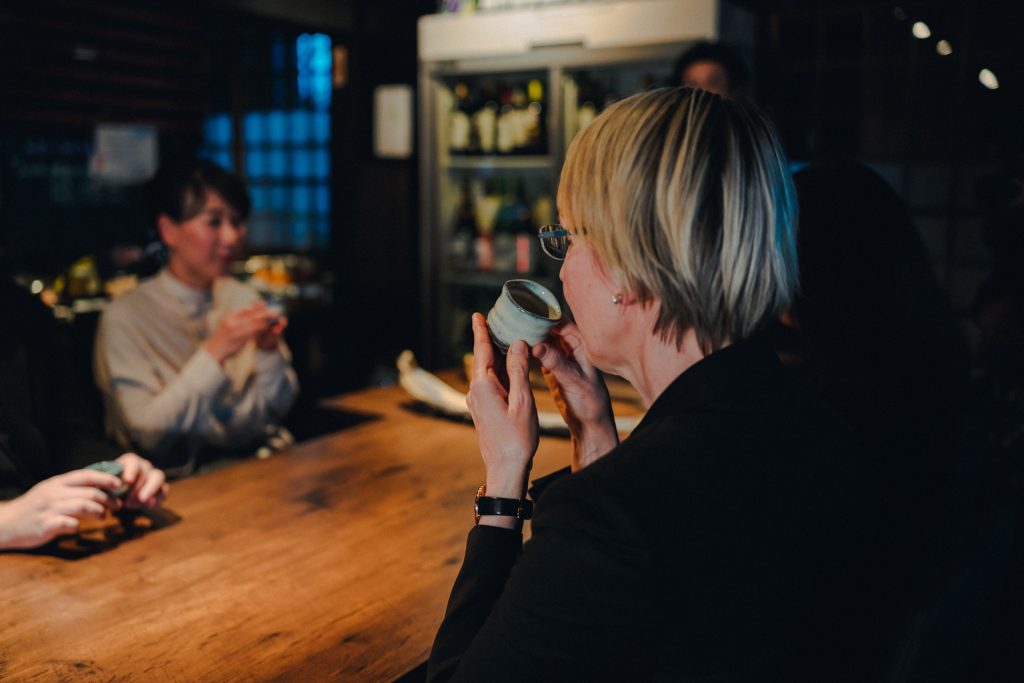
The flavor seems like that of soup stock.
All the guests are amazed by the distinctive Japanese taste, and they are surprised again by how the flavor changes in the second brewing.
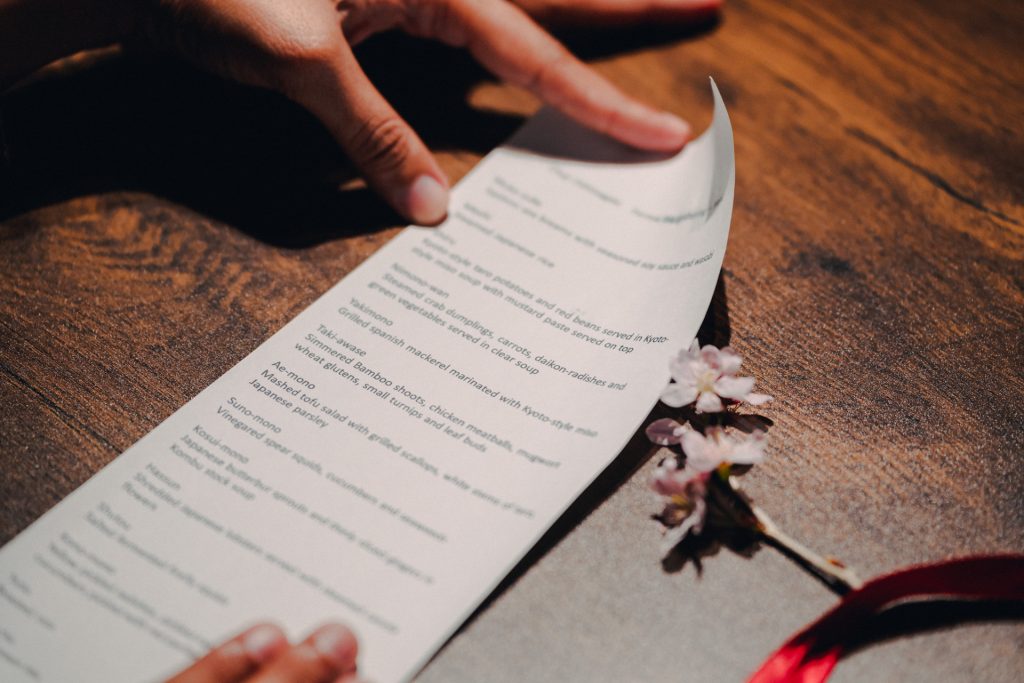
The guests change seats, and Chef Morii greets them.
He thanks everyone for coming and describes the meal that is about to begin. “This is a casual version of tea kaiseki, so please have a relaxing time,” he remembers to add.
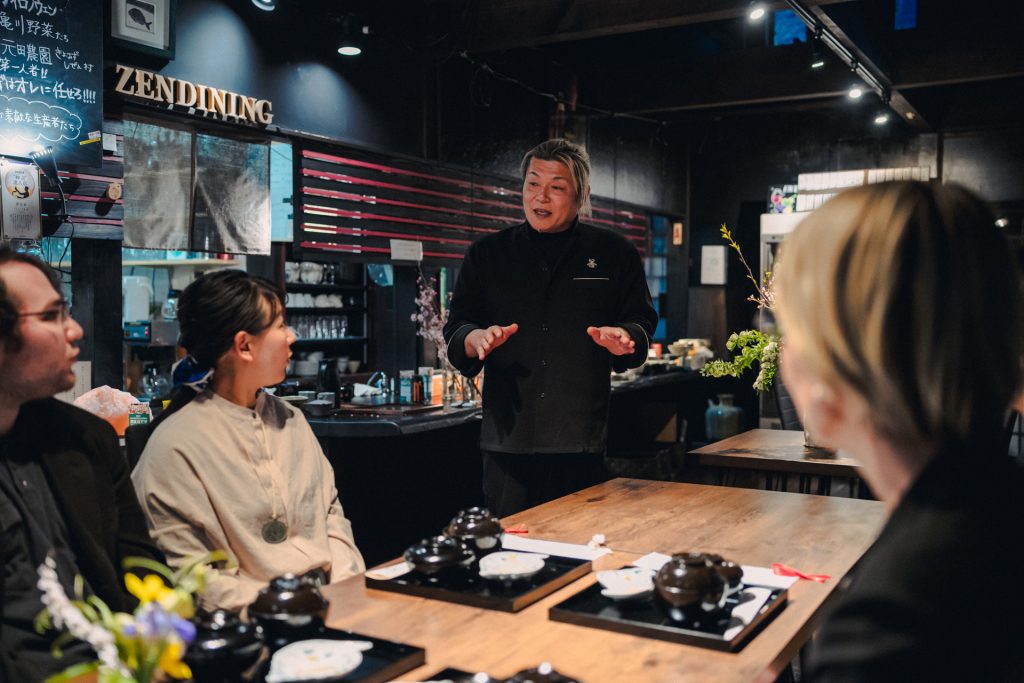
A casual Kumamoto tea kaiseki for experiencing Japanese culture is easy for even Japanese people to try, as they have always considered tea ceremony to be something inaccessible.
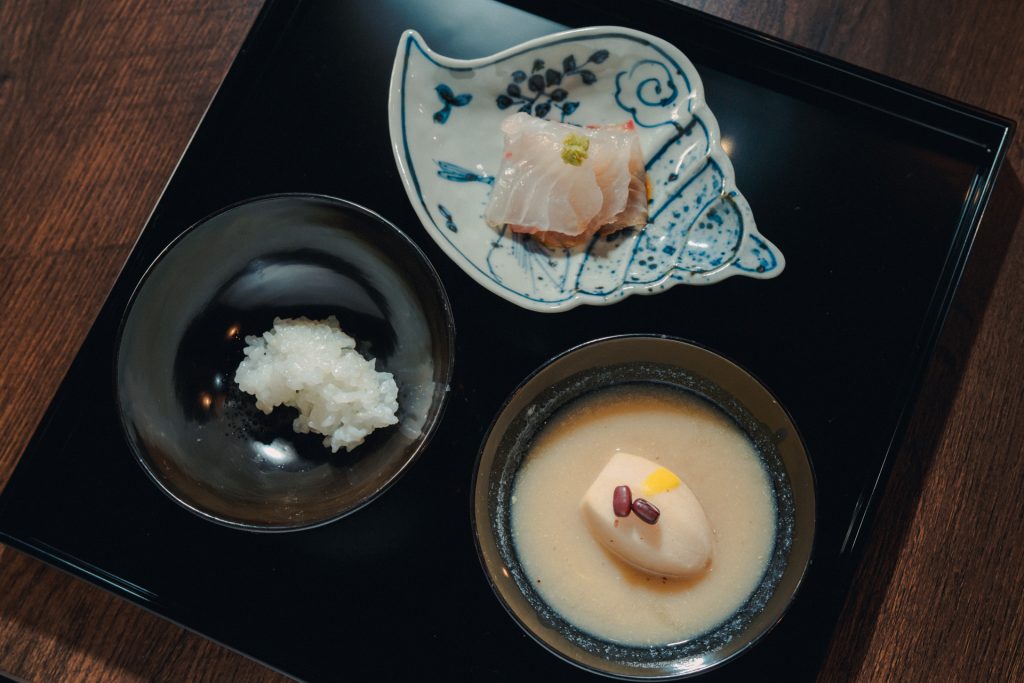
The first dish, or mukouzke, comprises sea bream sashimi accompanied by rice and soup.
The small amount of rice means that it just finished cooking in the pot, so it’s a treat for the guests.
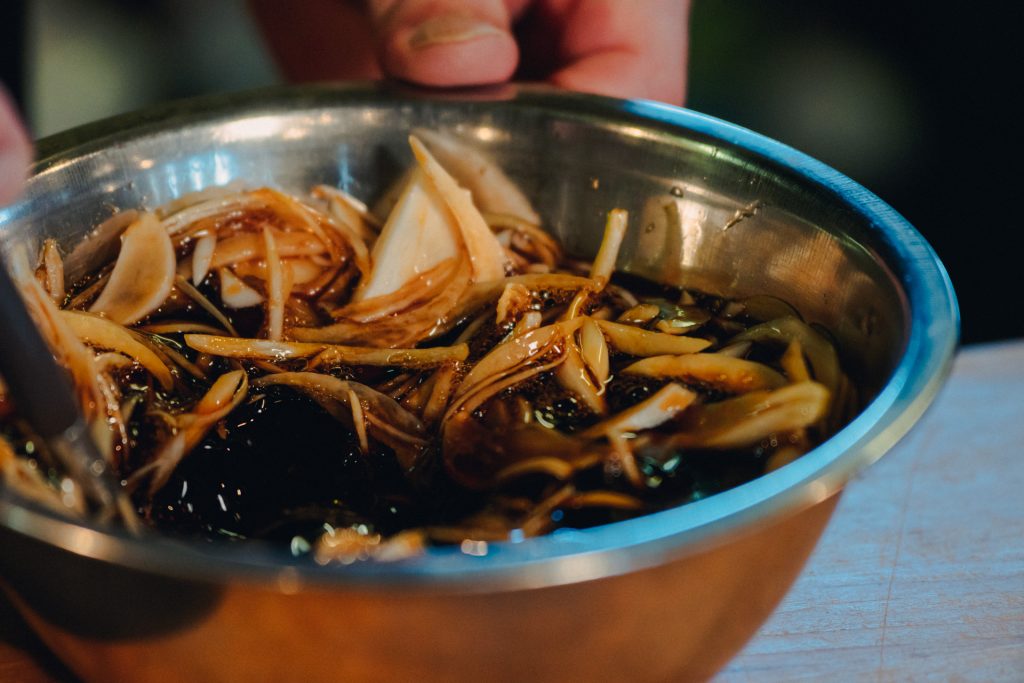
The seasoning for the sea bream uses onions grown by Mr. Kayabata, who Chef Morii regards as a “person of power.” They are julienned and dressed with soy sauce, with the soy sauce having an oniony aroma.
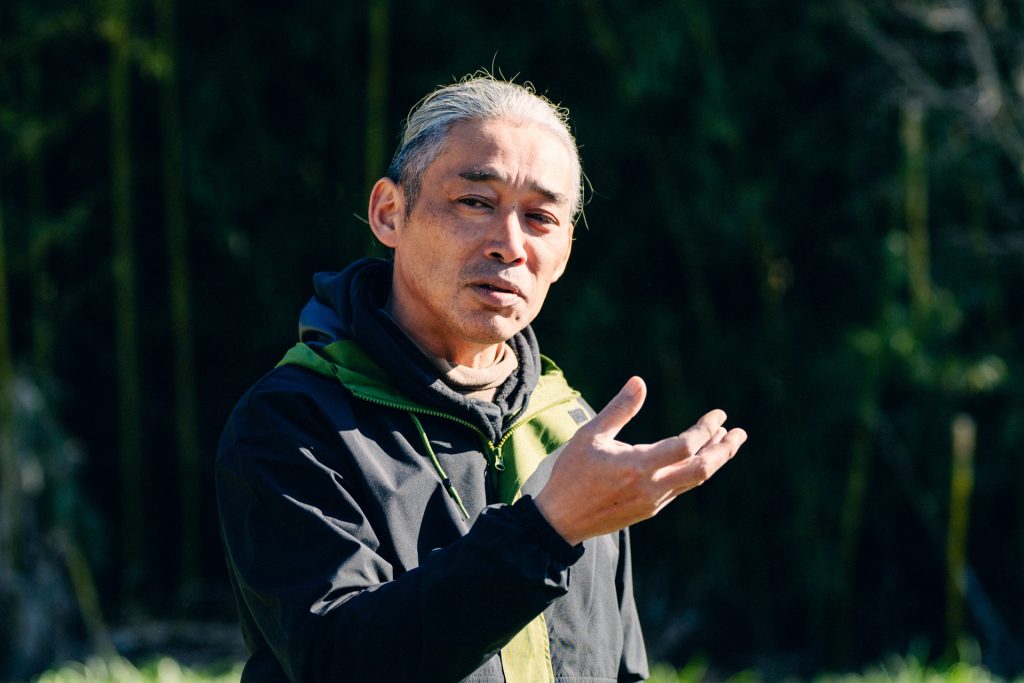
Mr. Kayabata owns the Kuru Farm in Arao, where he grows onions, carrots, and the like. He does not use fertilizers, compost, or agricultural chemicals, and he does not engage in insect control. He grows delicious, healthy vegetables using the power of microorganisms to prepare his soil.

People have called Chef Morii a “samurai.” His knives, which are essential tools in food preparation, come from the Nishida Knife Studio.
Chef Morii takes good care of his tools, including the knives he has used since his days in culinary school, and always polishes these. “I want implements that suit my movements.” The person who fulfilled this wish is Mr. Nishida of Nishida Knife Studio in Nankan Town.
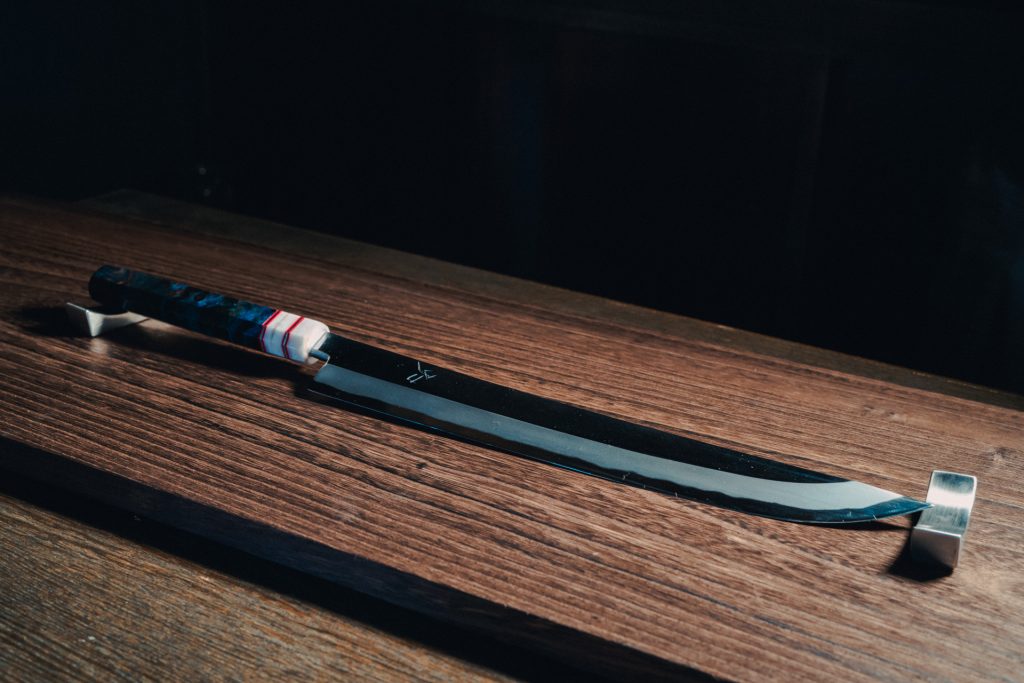
Mr. Nishida has practiced his trade for more than 20 years, although he is young for a knifesmith. He also specializes in repairing Japanese-style knives.
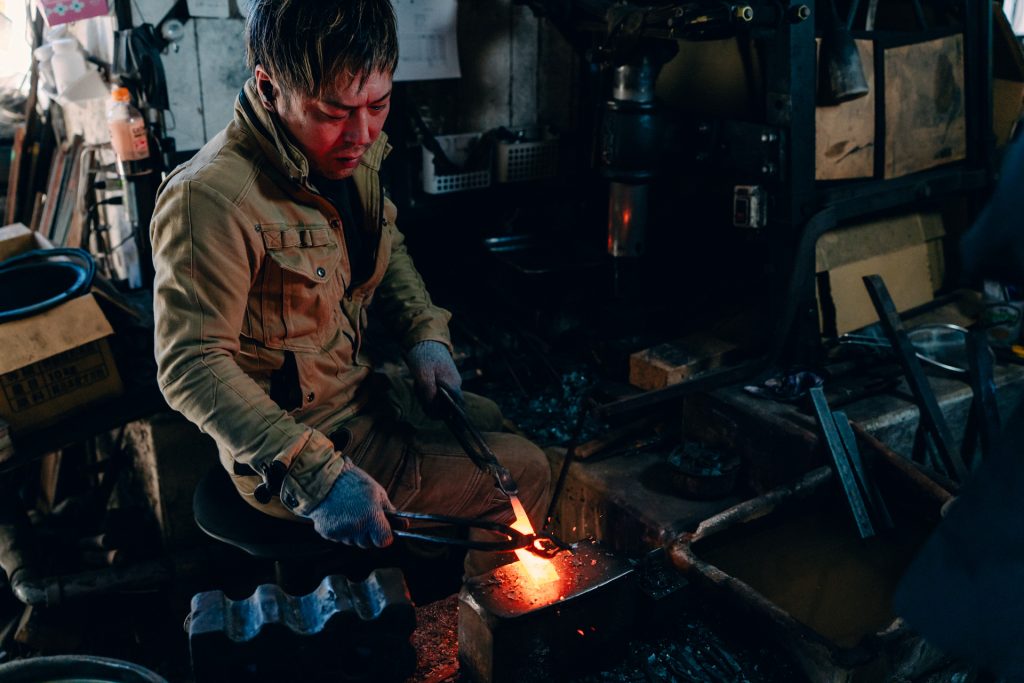
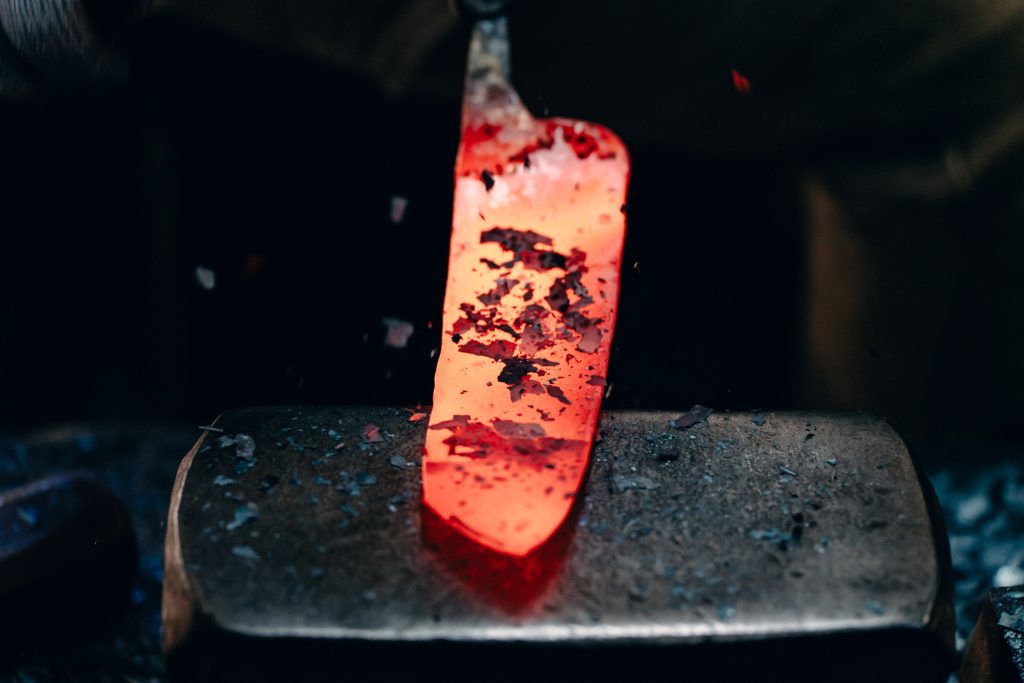
What Chef Morii ordered was “a knife that can handle large items.” He likes to do the cutting process right before the food is eaten so that the full sapor of the ingredients comes through. “I cut the ingredients right before they are served. I am particular about cutting them so that one won’t even notice that they were cut,” he says.
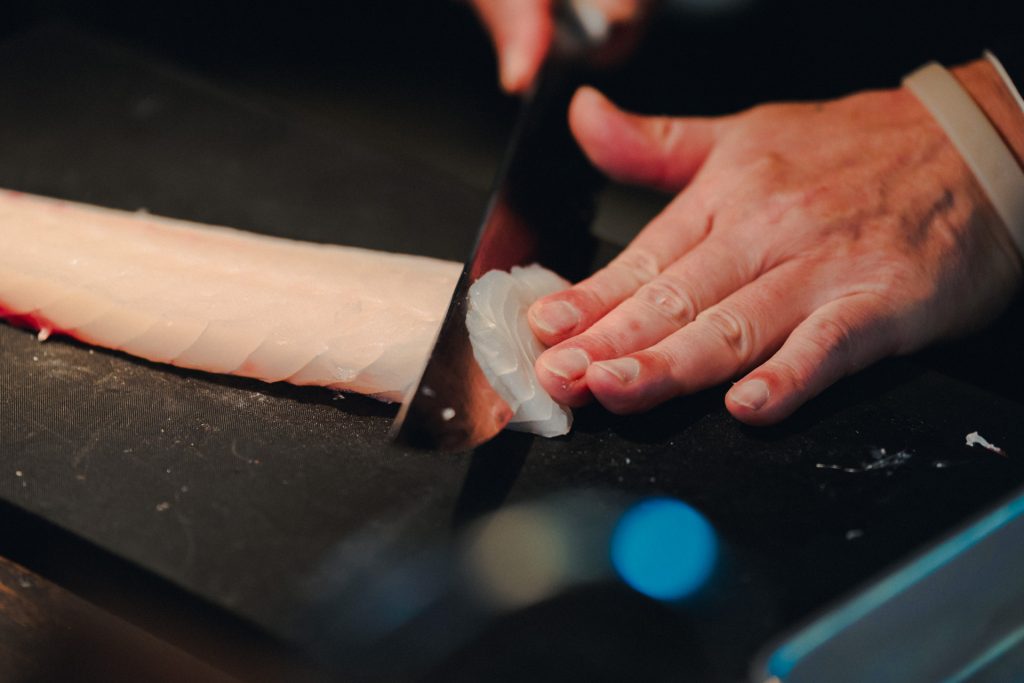
The edge of the blade fits exactly with Chef Morii’s movements, producing a beautiful cut. It is said that the way that food is cut can change the flavor of sashimi and other foods. Don’t hesitate to ask about it.
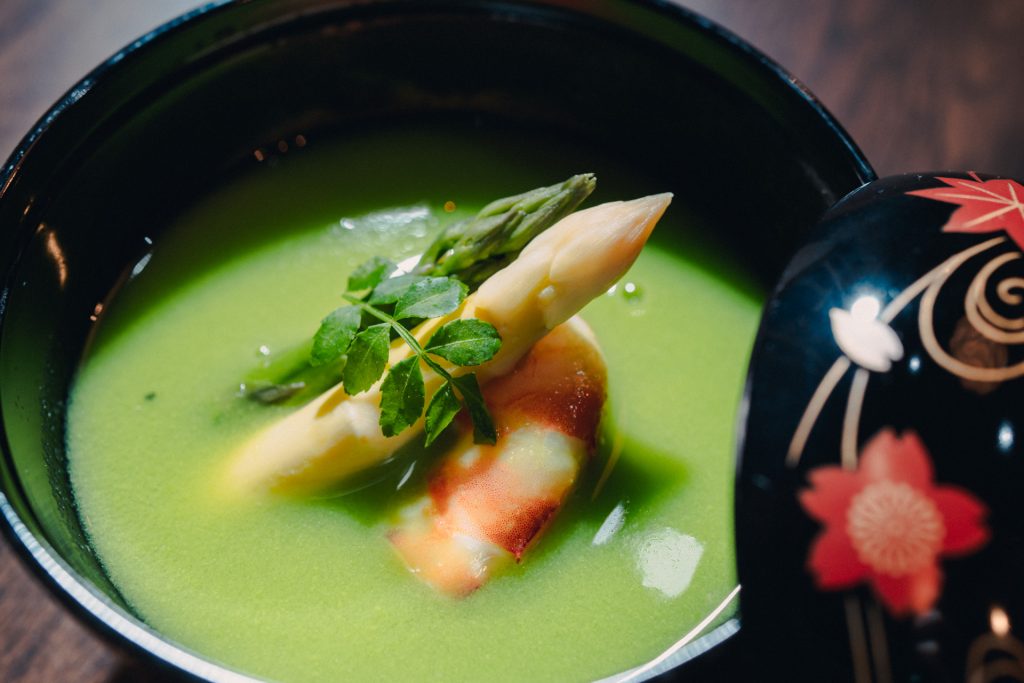
Today, the simmered course comprises prawns, asparagus, clam broth, and green pea potage, evoking the color of a field in springtime.
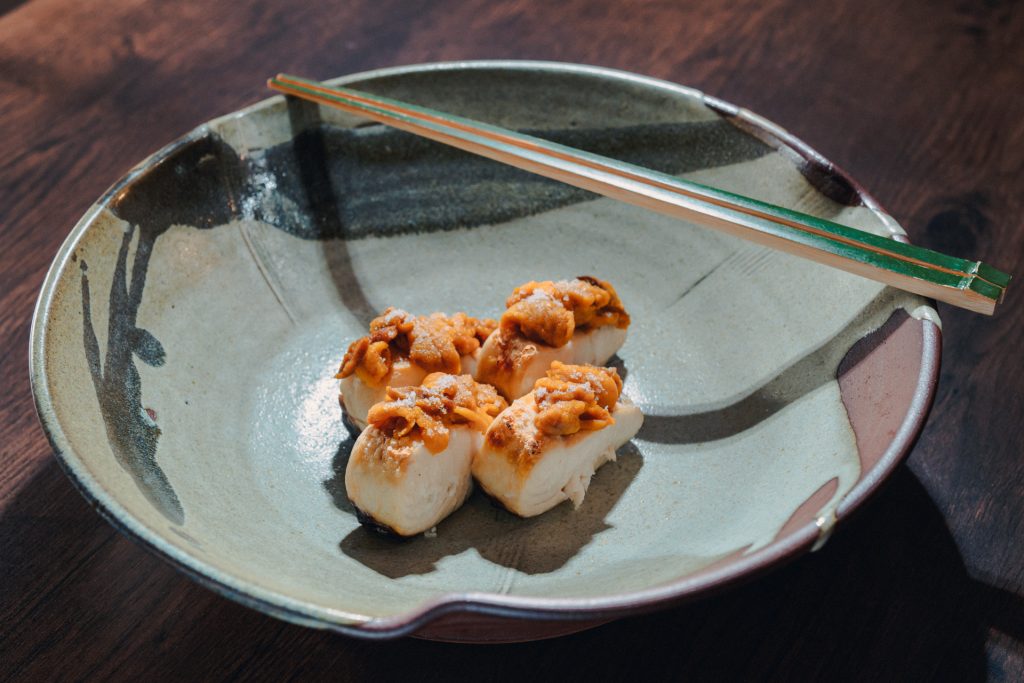
The grilled dish is Spanish mackerel with sea urchin. The mackerel is grilled and then topped with white sea urchin and Amakusa salt to create a simple dish. The plump fish and rich sea urchin go well together.
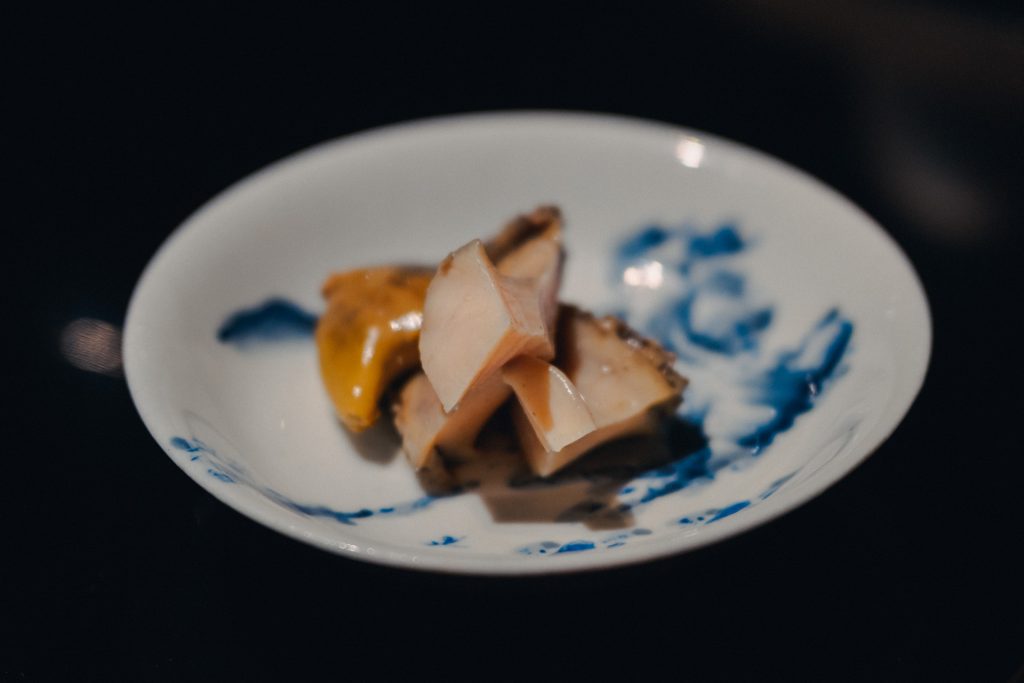
Chef Morii adjusts his menu by paying attention to the guests’ expressions and their eating pace. Today, during the break before the next course, he brings out Amakusa abalone that he cooked for five hours in Japanese sake from the Hananoka Sake Brewery in Nagomi Town.
Zen is a place that conveys the richness of Kumamoto’s food.
This is a dish that epitomizes Chef Morii’s desire to have guests taste the flavor of the ingredients as simply as possible.
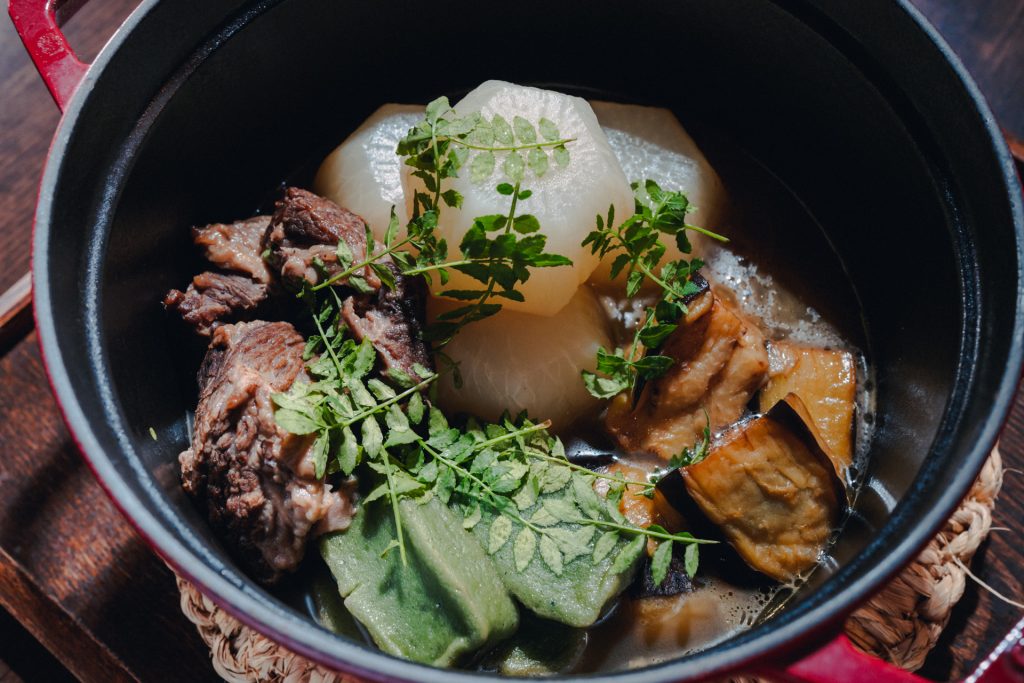
When the pot is uncovered, one sees a mixture of baby turnips, globe eggplant, wormwood cake, and Akaushi beef from Mr. I, Aso’s top free-range beef rancher, which has been braised for seven hours.
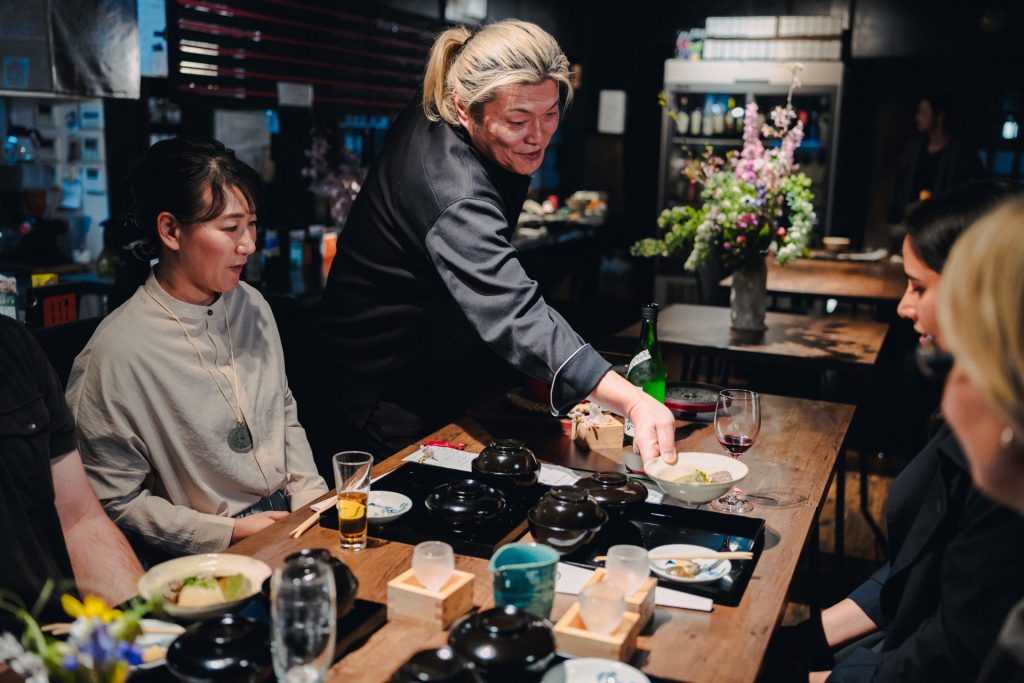
In traditional tea kaiseki, guests sit in a row and pass the plate to the next person after taking their share, but here it’s more casual. Chef Morii describes each dish and then passes it out.
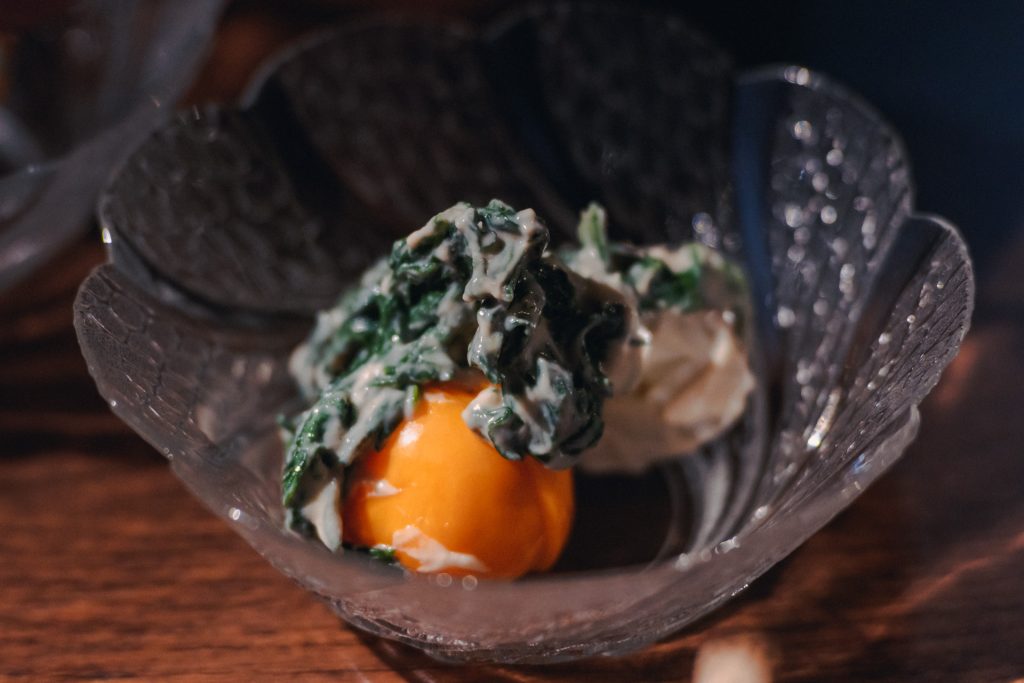
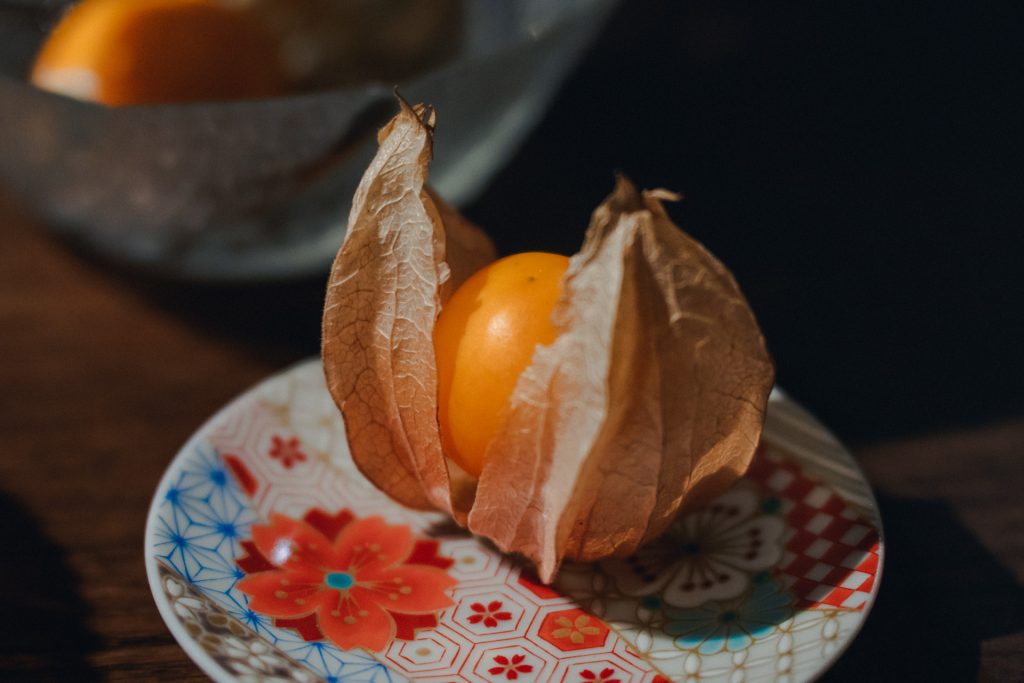
Tea is brought in while the guests savor each dish.
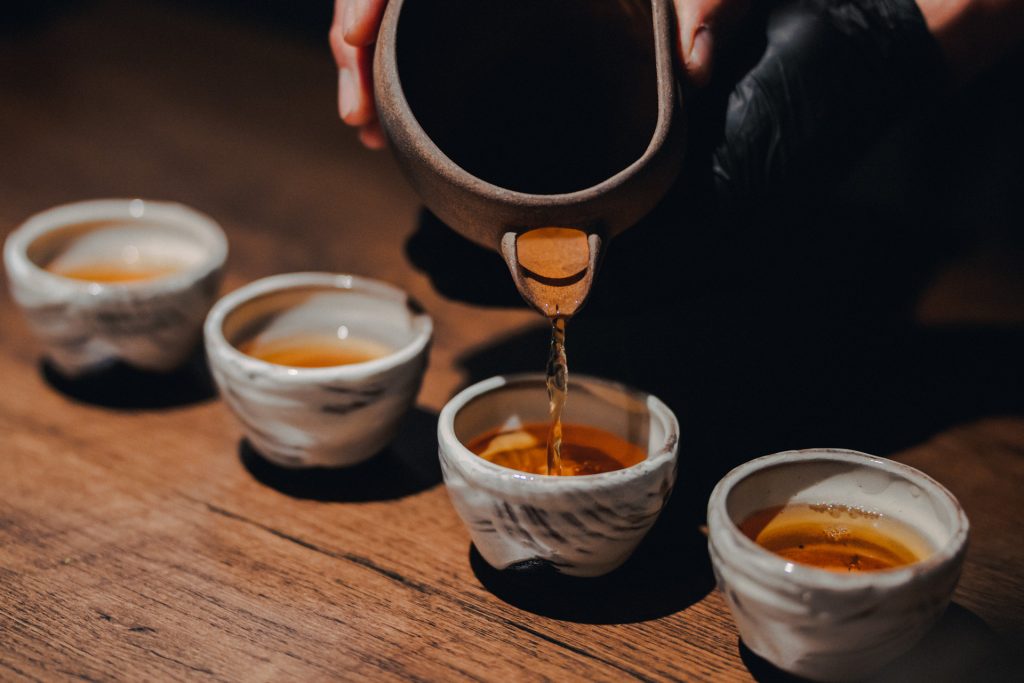
The mid-meal tea selected by Hiro-san is roasted green tea. Hiro-san has roasted tea leaves from the Sakaguchien tea farm in Minamata, and it has a scent that relaxes as it spreads.
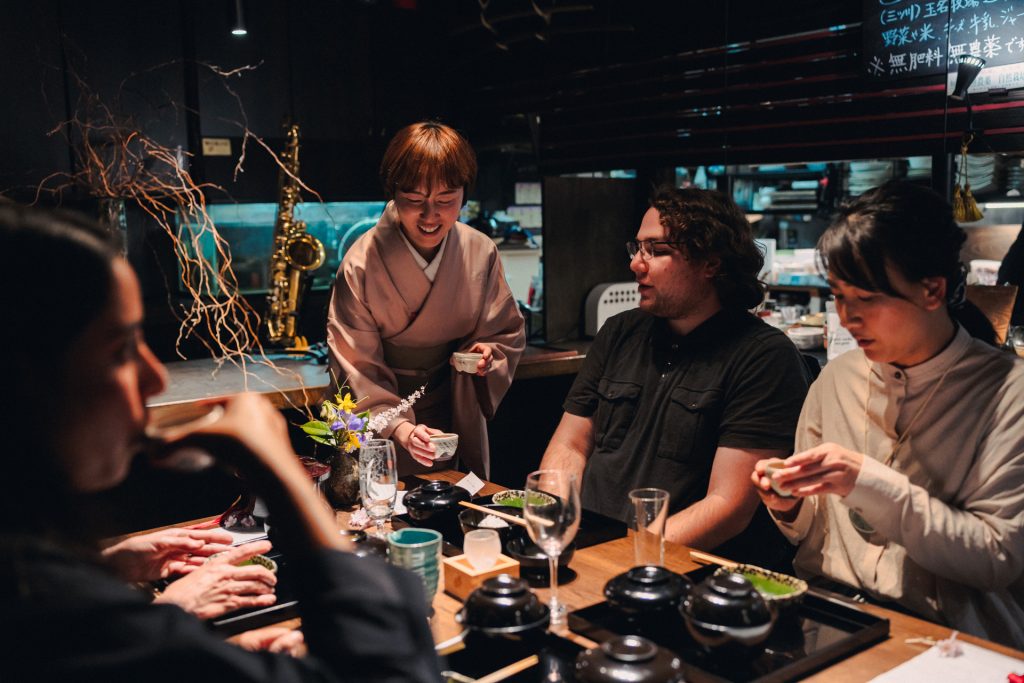
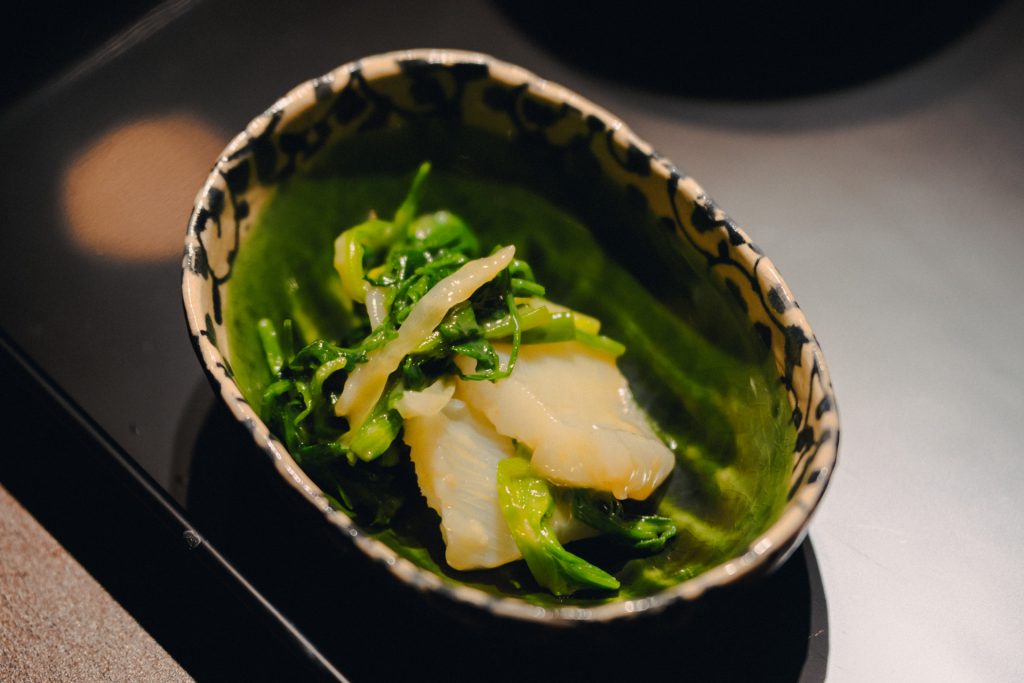
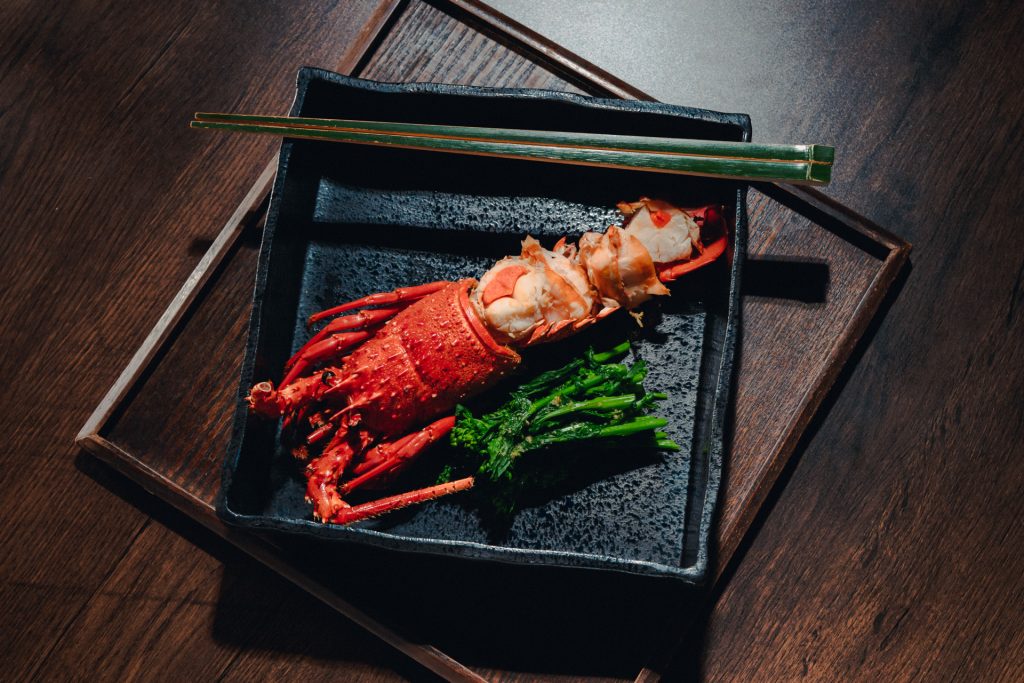
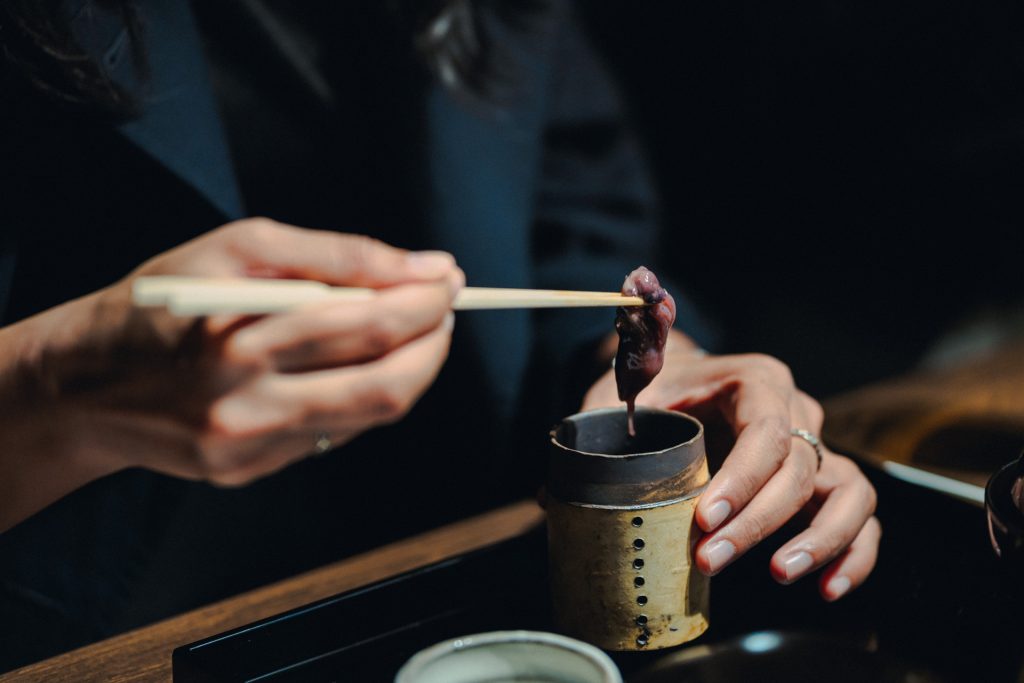
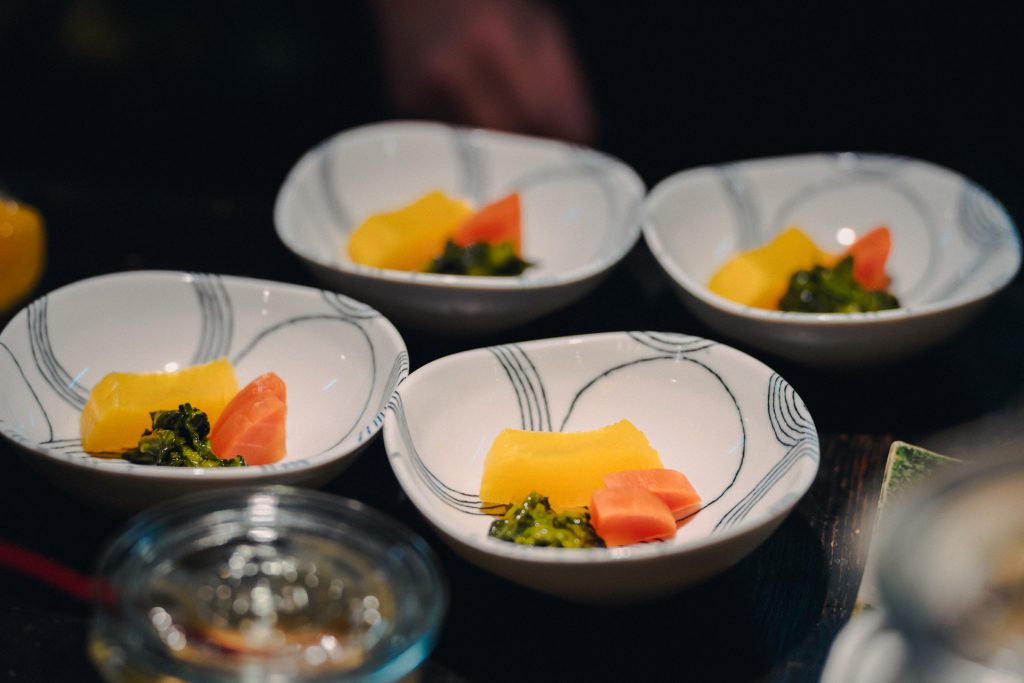
Essential to the pickled dish are takuan pickles, as this is customary in tea kaiseki.
Hot water containing roasted rice is poured into the rice bowl remaining on the table at the end of the meal. The rice is then eaten by scooping it up with the takuan.
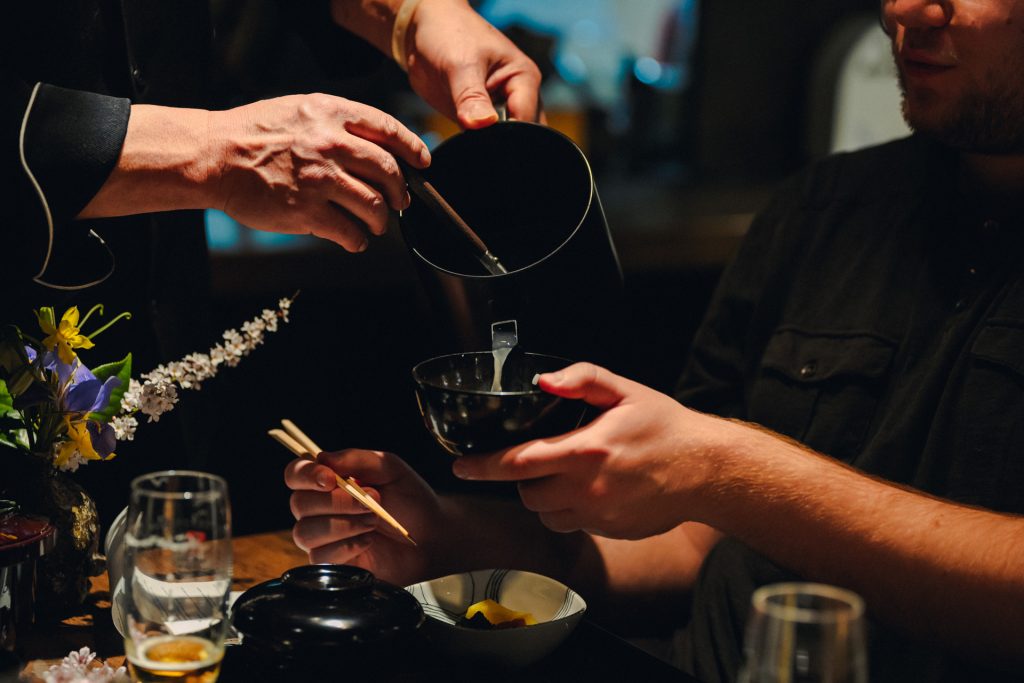
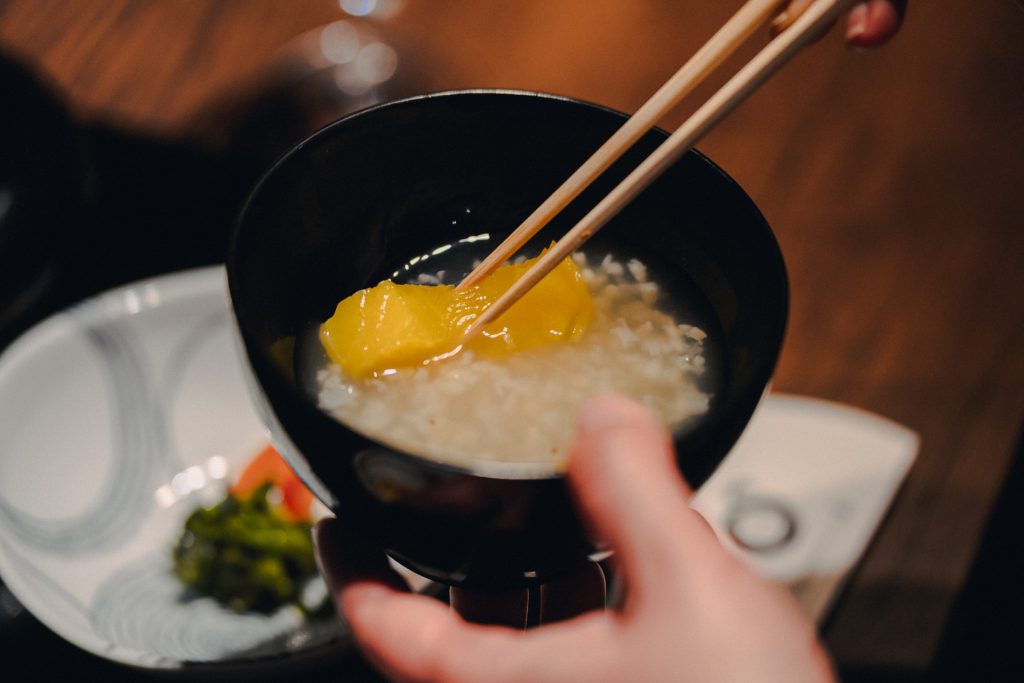
“Cleaning up the bowl with the finely sliced Takuan is a fitting way to thank the host for the enjoyable meal.”
I would like to express my sincere appreciation for your hospitality.
The Kumamoto Tea Kaiseki is approaching its finale.
The restaurant wanted to order a dessert that would go with matcha tea from Mr. Shimogami at the L’Oiseau Bleu shop in Tamana, and unexpectedly, he suggested a “matcha terrine.”
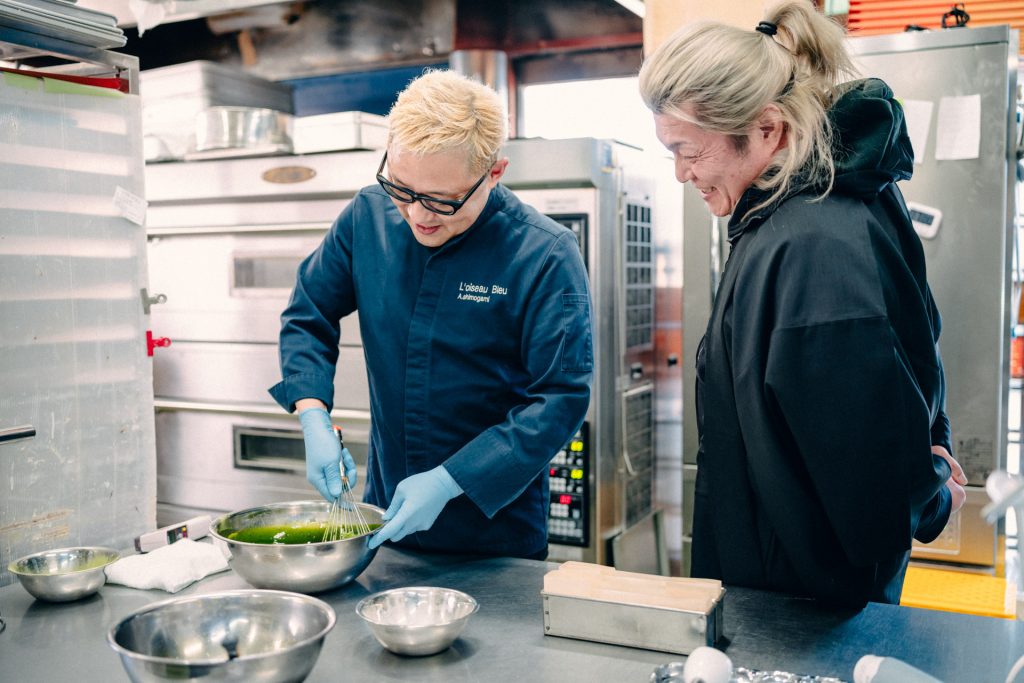
The flavor of matcha is rich and strong, and Chef Morii paired it with the salty aroma of pickled cherry blossoms for a perfect combination.
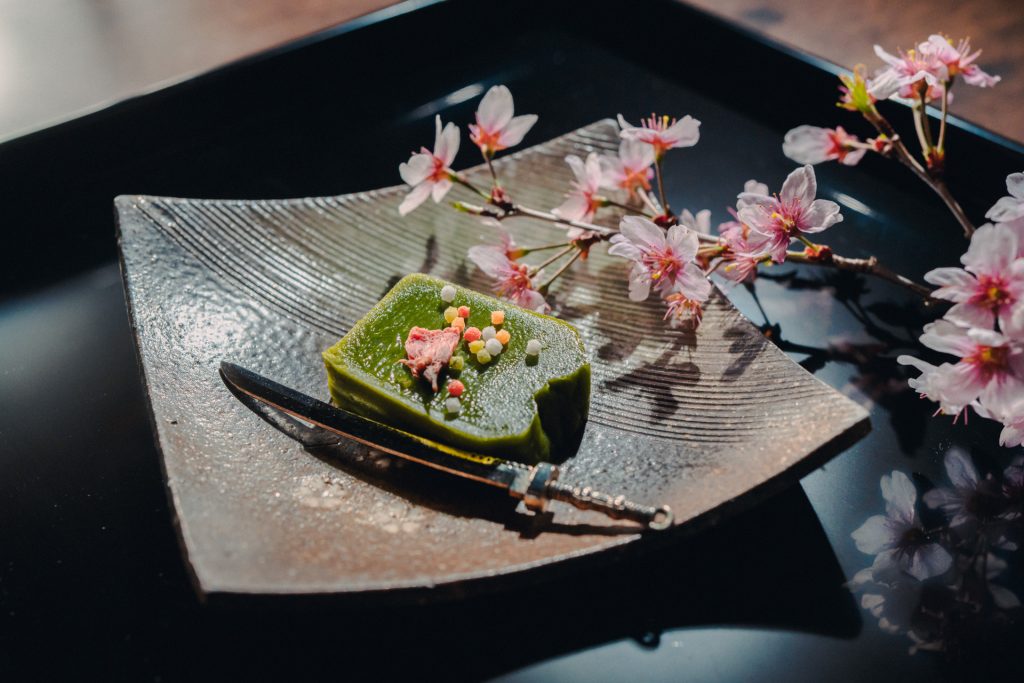
Then, there is a light tea brewed by Hiro’s wife, Junko.
The tea cup is from the Zozogama kiln in Kamiamakusa.
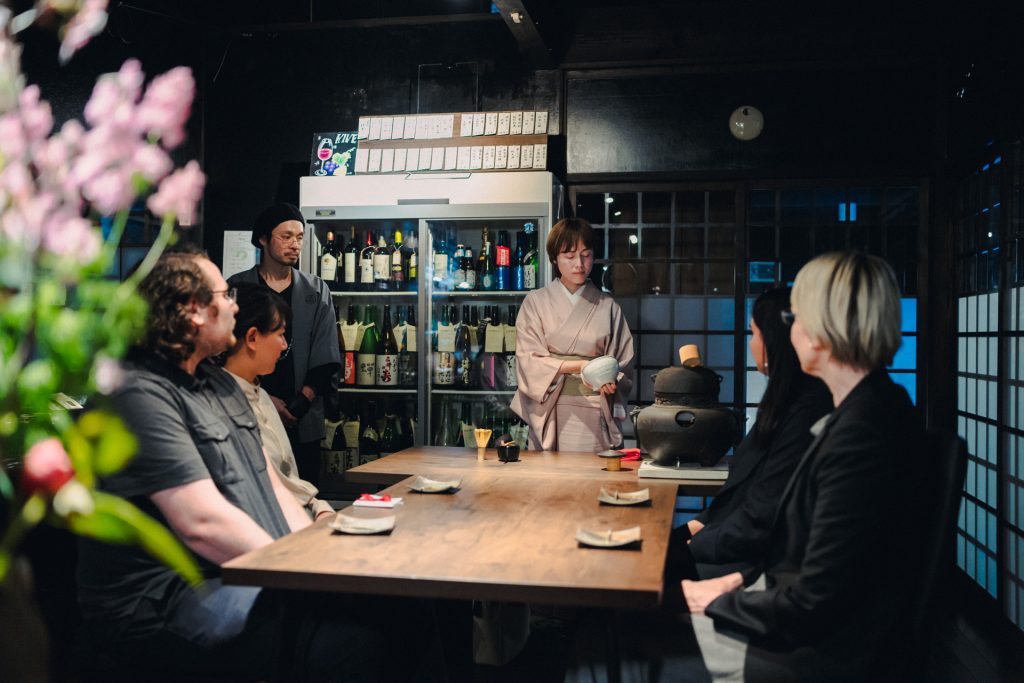
No two cups are alike, according to Mr. Konomi, the owner, who has a unique sense of creativity. Attracted by his style, Chef Morii has attended several of his pottery classes.
“I want tea cups that are somewhat large and have presence. After that, I leave it up to Mr. Konomi’s sensibilities.” With only those words to go by, the tea cups were finished in only two days. Chef Morii was intrigued by the pottery wheel and the texture, and they complete the image of the Kumamoto Tea Kaiseki.

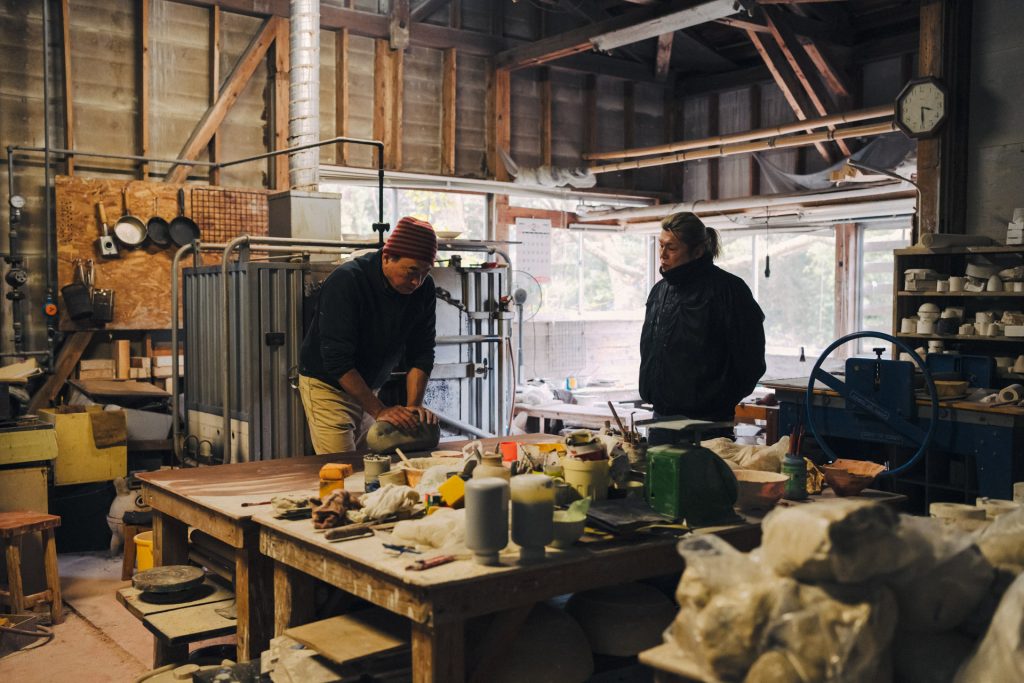
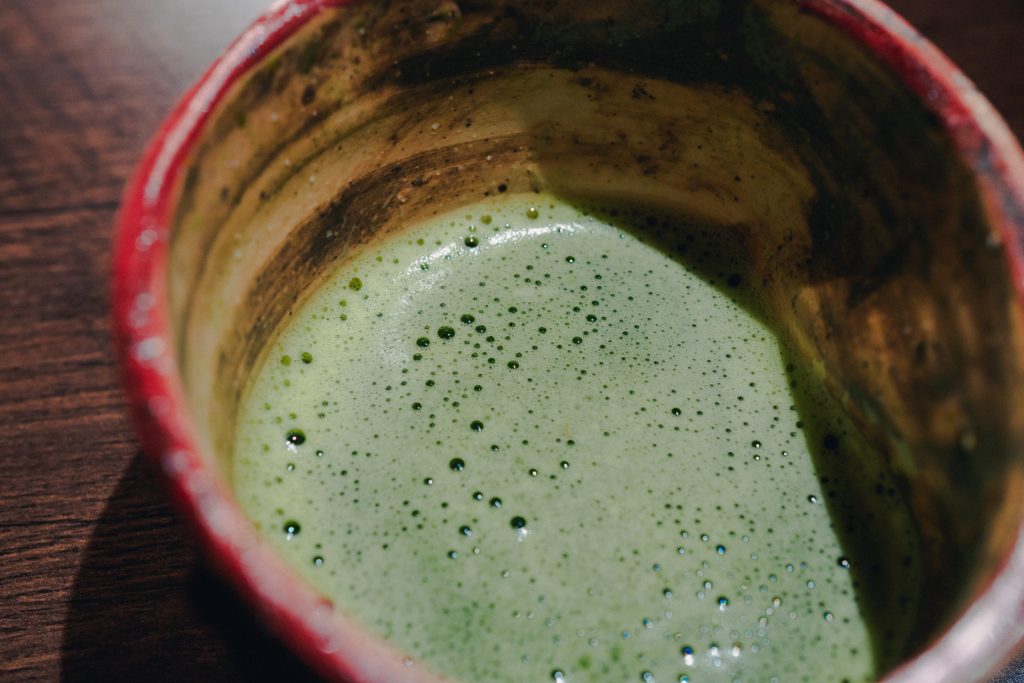
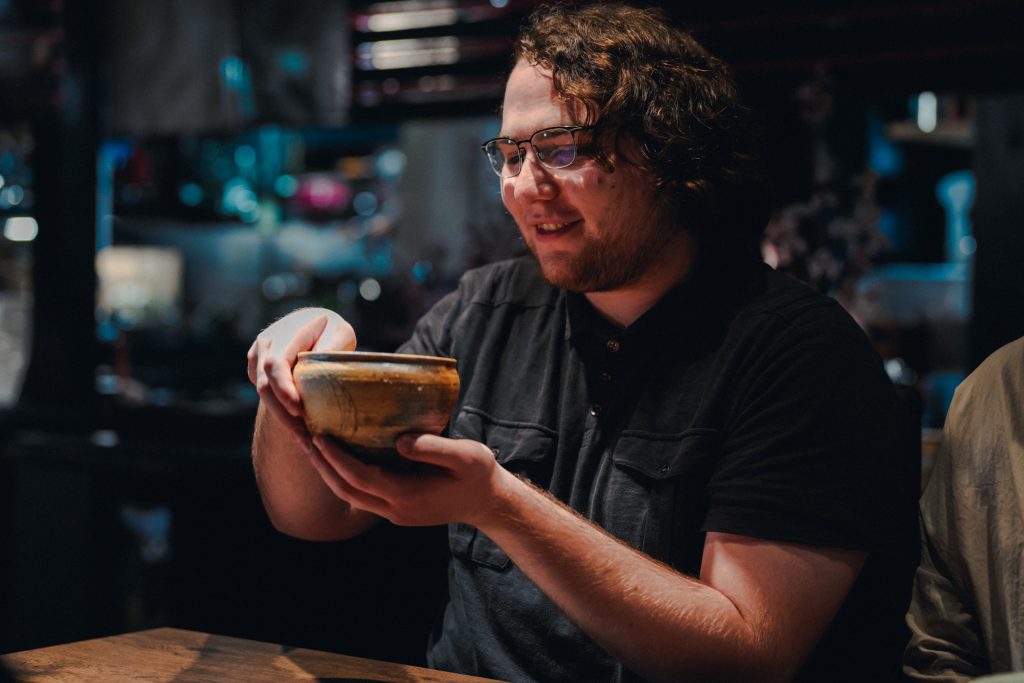
Popularized by Sen no Rikyu, tea ceremony is an essential part of Japanese culture. The Kumamoto Tea Kaiseki, which one can experience in Kumamoto, where Rikyu’s tradition is being preserved, is Zen’s Premium Menu, which is brimming with heartfelt hospitality and heartfelt appreciation for food. We hope that you will relax and whole-heartedly enjoy the tea and the meal.
Related article: Creative Japanese Dining Zen, Makoto Morii Select Takema Tea House Koshinraku
Restaurant information
Address:1591-8 Naka, Tamana City, Kumamoto Prefecture
TEL:0968-74-2898
Business hours:10:30–20:00 *Reserve at least one day in advance
Website:https://zendining.crayonsite.net
Reservations for the Premium Menu
Each restaurant has different ingredients in its Premium Menu, so diners may enjoy Kumamoto’s seasonal dishes. Please directly contact the restaurant for details.
Kumamoto Tea Kaiseki *Reserve at least one week in advance
Price:Starts at 30,000 yen per person
Tel.: 0968-74-2898
 Facebookでシェア
Facebookでシェア Twitterでシェア
Twitterでシェア LINEでシェア
LINEでシェア